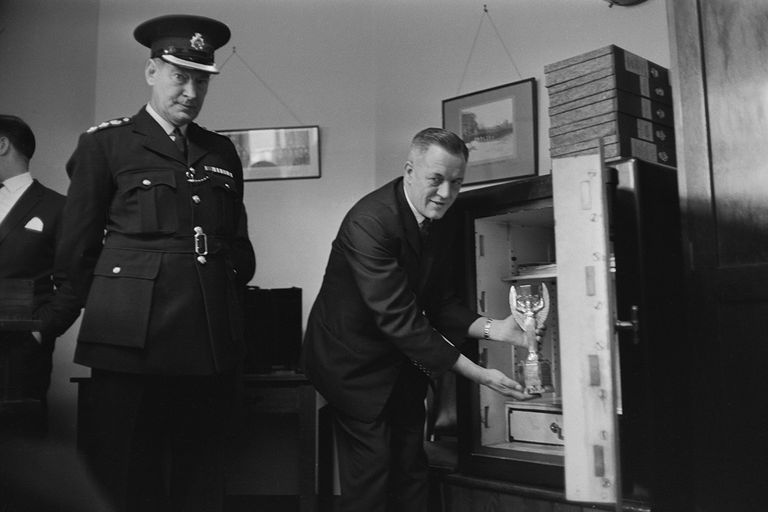After The World Cup Was Stolen, An Unlikely Hero Helped Take It Back
The year 1966 was a glorious one for English soccer fans. For the first time ever, the FIFA World Cup competition would be held in the country that had invented what’s formally known as association football. Now stadiums in England would host the contest, as 16 teams fought it out to be crowned world champions. But scandal was to hit the 1966 World Cup even before a single ball had been kicked: the competition’s priceless trophy was stolen.
The Jules Rimet Trophy
Some background: until 1970 the winners of the World Cup were presented with the Jules Rimet Trophy. A new one had to be created after 1970 because in that year Brazil won the competition for the third time, entitling the nation to hang on to the trophy permanently. Jules Rimet had been the president of FIFA, world football’s governing committee, when the first World Cup was staged in Uruguay back in 1930.
Nike
A French artist called Abel Lafleur designed the trophy, basing it on an original ancient Greek statue of the goddess of victory, Nike. She held a cup above her head and the statue was constructed from silver with a plating of gold. The 12-and-a-half-inch statue stood on a base fashioned from the semi-precious stone lapis lazuli, and the whole thing weighed a bit over 8 pounds.
Footballing history
Of course the trophy’s true value lay not only in the raw materials used to make it, but in its unique place in footballing history. Up until 1966 the competition had been held in Uruguay, Italy, France, Brazil, Switzerland, Sweden, and Chile. By 1966 the trophy had been won twice by Uruguay, Italy, and Brazil, and once by West Germany. So the World Cup had seen a fair bit of the planet.
Hidden in a shoebox
Italy had won the World Cup in 1938, the year before WWII broke out. The competition should have run in 1942 and 1946 but didn’t because of the war. So the cup was stranded in Italy for the duration of hostilities in the custody of FIFA vice-president Ottorino Barassi. Concerned for its safety, Barassi decided to hide the trophy under his bed in a shoebox, where it remained in safety until the war’s end.

